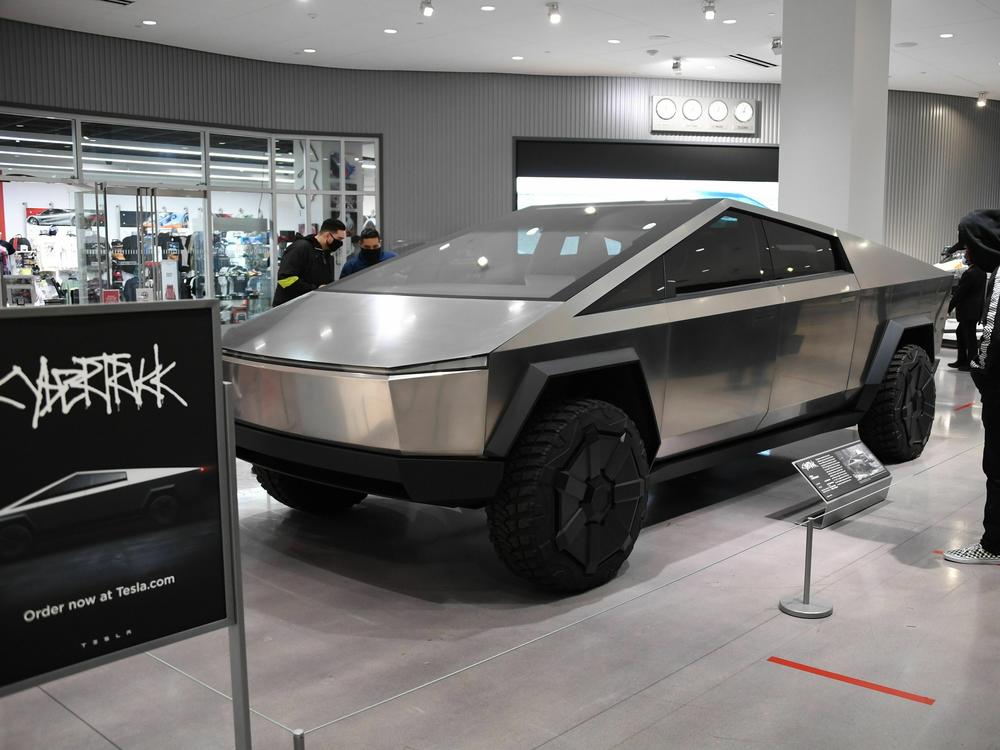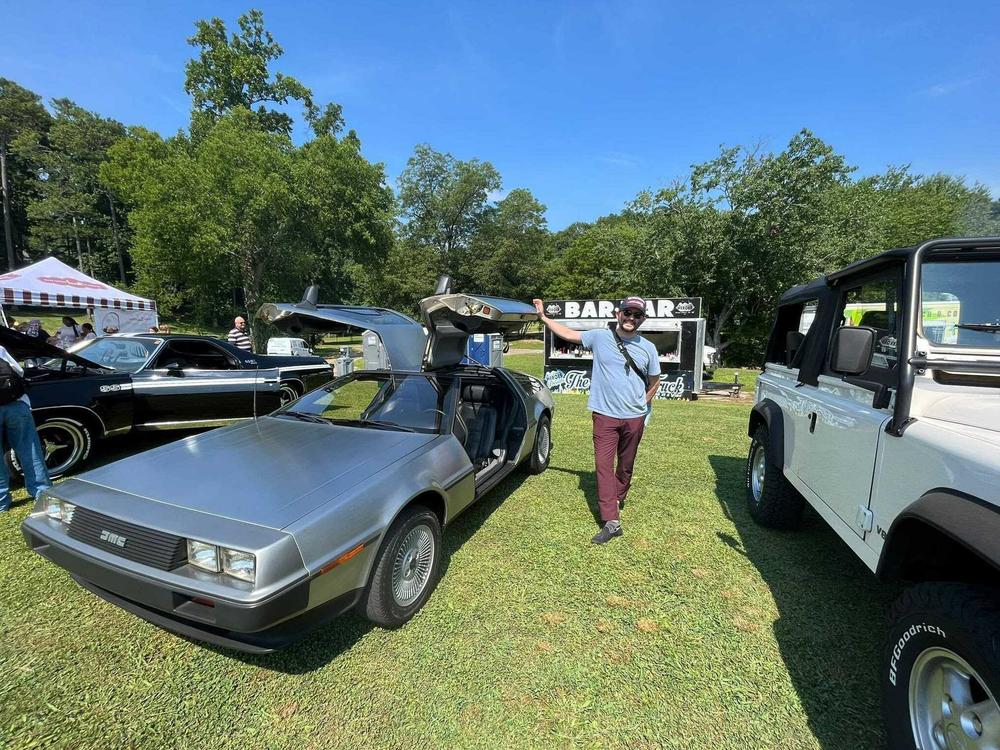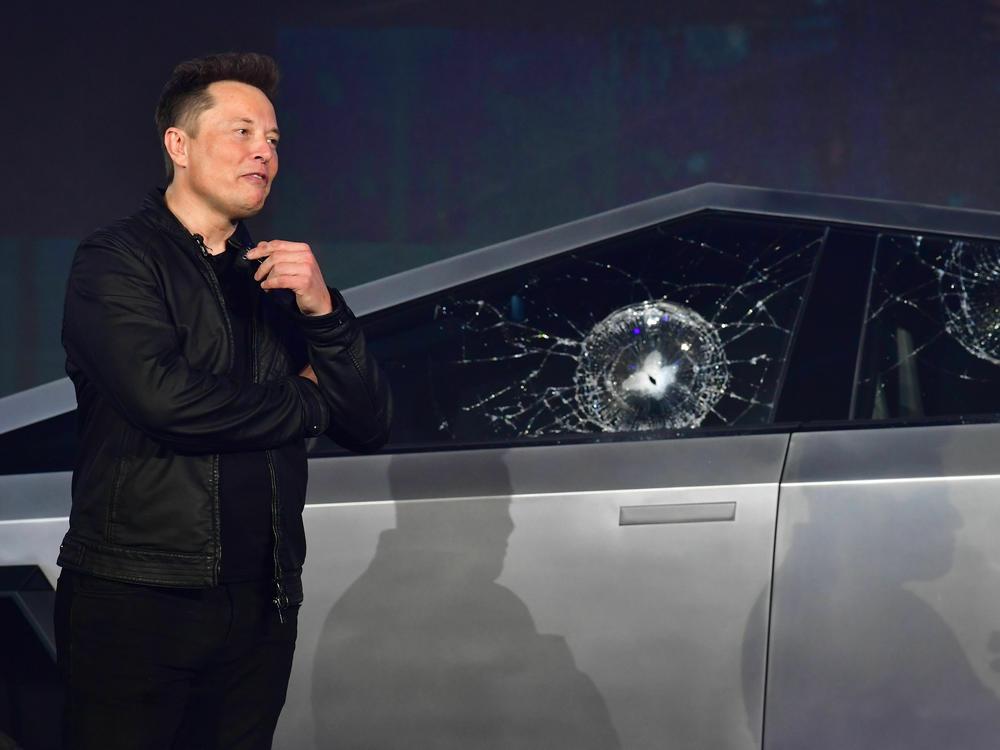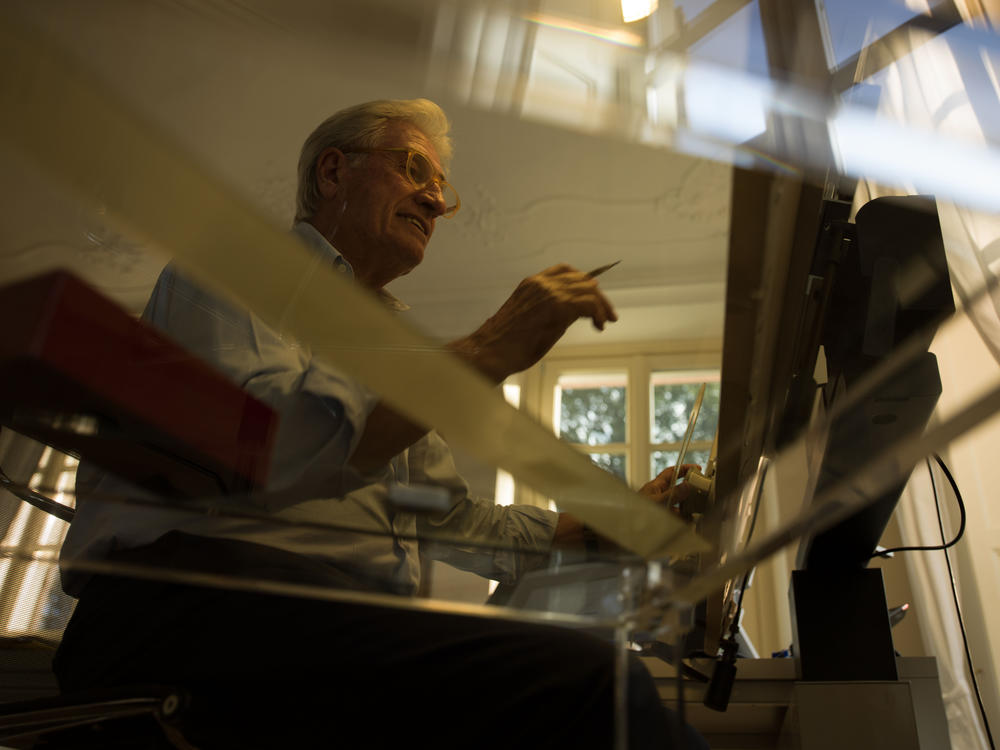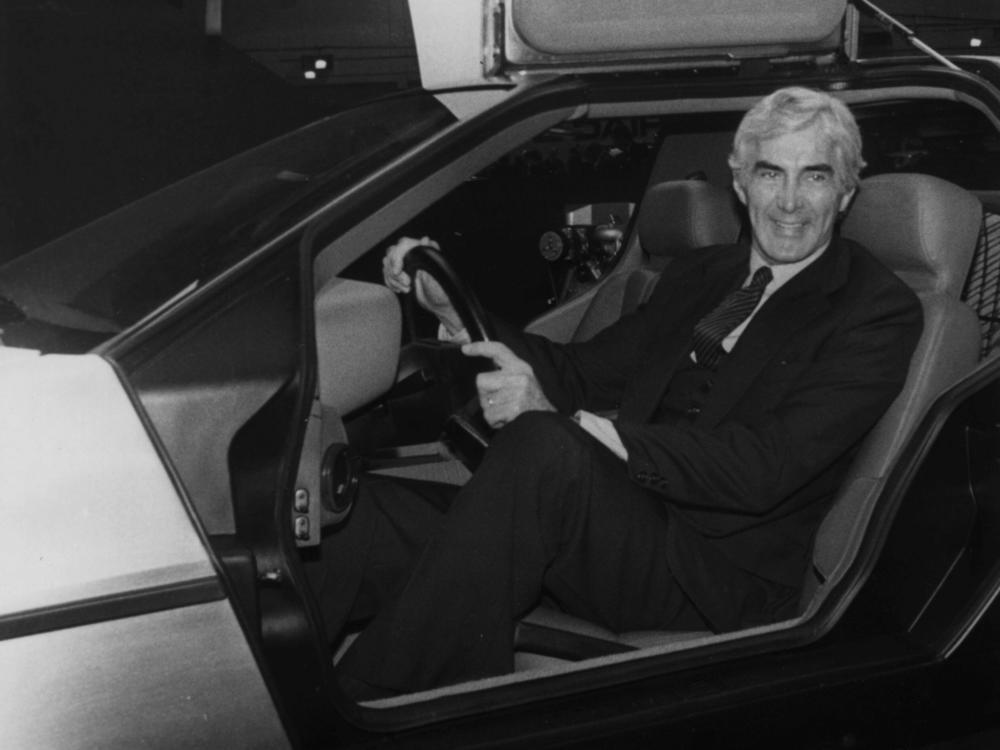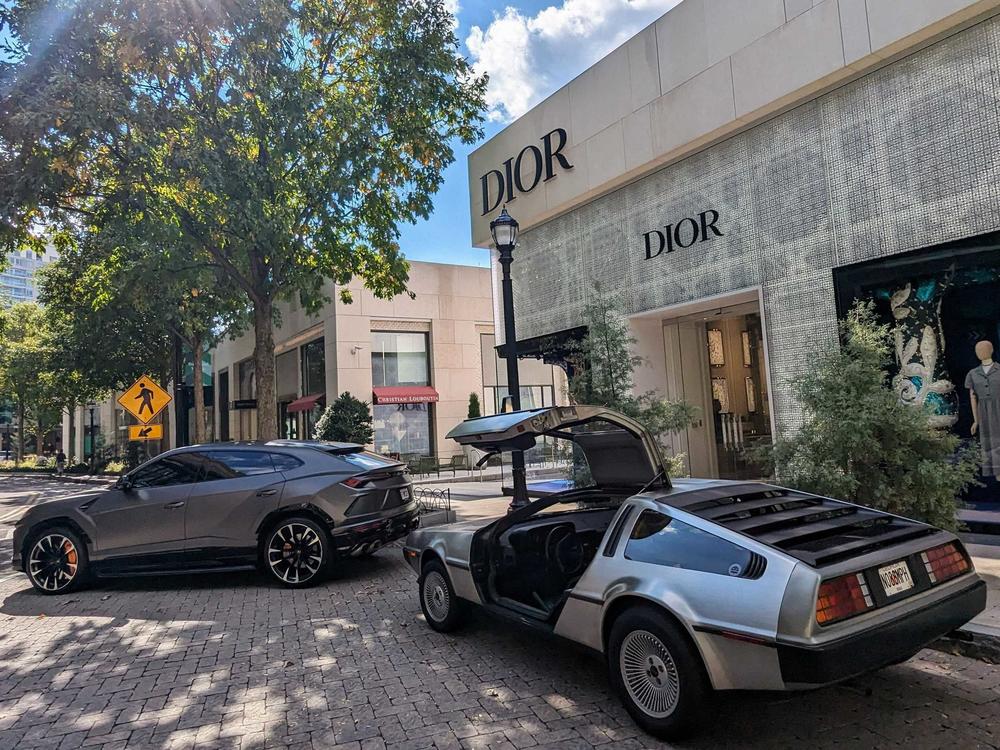Section Branding
Header Content
The legendary designer of the DeLorean has something to say about Tesla's Cybertruck
Primary Content
There is one person who can truly relate to the onslaught of criticism Tesla has faced surrounding its yet-to-be-released Cybertruck and it's an 85-year-old Italian man.
That octogenarian is Giorgetto Giugiaro, the legendary car designer behind the Lotus Esprit, BMW M1, and most notably, the DeLorean DMC-12.
The iconic sports car immortalized in the Back to the Future series faced a series of critiques in 1981 that are remarkably similar to those being leveled at the Cybertruck; particularly about its angular design and smudge-prone body.
Tesla need not panic, Giugiaro told NPR over email.
"When you step outside the norms, it's almost always seen as a provocation," Giugiaro said. "It happens in all fields, from furniture to cooking, etc. Everyone wants to distinguish themselves; it's a market necessity, and the Cybertruck will surely be successful, I'm sure of it. I'm convinced it will find its admirers."
Foreshadowing a fraught manufacturing process
First impressions mean everything and the one made by the Cybertruck and Tesla CEO Elon Musk wasn't great.
In typical Tesla style, the unveiling in Los Angeles four years ago included a countdown clock and an auditorium full of fans and journalists.
The stage was enveloped in artificial smoke as the truck made its entrance, accompanied by the resonating beats of music from loudspeakers. Along the edges, pyrotechnic flames ascended while the vehicle came to a halt before a graffiti-style Cybertruck graphic, starkly depicted in black and white.
On Nov. 21, 2019, Musk engaged the crowd, asking, "You want a truck that's really tough? Not fake tough?"
For the Cybertruck's exterior, Musk revealed a plan to use a stainless steel alloy, the same one his engineers at SpaceX utilized for the company's Starship rocket.
However, the presentation took an unexpected turn during the "Tesla armor glass" strength test.
A metal ball dropped onto a sheet of what Musk called "regular car glass," resulted in a long crack. The Tesla glass was then subjected to a drop from around 10 feet, remaining intact. Musk, not satisfied, handed the ball to Tesla's chief designer, Franz von Holzhausen, who had previously demonstrated the truck's durability by whacking it with a sledgehammer.
"Franz, could you try to break this glass, please?" Musk challenged.
"You sure?" von Holzhausen inquired.
"Yeah."
With little hesitation, von Holzhausen hurled the ball at Tesla's truck, creating a spiderweb of splintered and dented glass.
"Well," Musk reflected afterward, "Maybe that was a little too hard."
Hard is perhaps the most appropriate word to describe Tesla's Cybertruck development.
The truck has been plagued by "serious powertrain, braking, suspension, structural, and sealing issues" that have resulted in deliveries being delayed by years, Motortrend reported. It was initially expected to hit the market about two years ago. Tesla now says the first deliveries will take place on November 30.
At the heart of Cybertruck's woes is its stainless steel exterior, which is very familiar to designer Giugiaro.
The complicated art of origami
Before the 2019 event, Musk had given glimpses of various Cybertruck design influences, attributing inspiration to films like Bladerunner and The Spy Who Loved Me, where vehicles showcased sharply angled fronts and wedge shapes.
This style was mastered in the 1970s in what Giugiaro called an "architectural exercise that resembles a modern Miami or San Francisco 'chalet,' almost a provocation."
Giugiaro called this design approach "origami."
"In 1972, his concept car for Maserati, the Boomerang, launched a whole new look for cars based on wedges and sharp, straight lines inspired by Japanese origami. The most famous commercial application of this 'folded paper' style would be the Volkswagen Golf Mk1, but the effect is visible in all the angular car designs that followed," Esquire reported in an exhaustive profile of Giugiaro in 2019.
The DeLorean debuted in 1981, the brainchild of Detroit bad boy John DeLorean who partnered with Giugiaro to create what would be his company's solitary offering: the DMC-12 (for more on the brilliance and infamy of DeLorean, Netflix's Myth & Mogul: John DeLorean is an apt primer).
Despite being built more than 40 years apart, the criticisms levied against the DMC-12 are surprisingly similar to those being made about the Cybertruck:
- The Cybertruck has received blowback for its stainless steel body (the DeLorean's stainless steel body "showed every fingerprint, every speck of dirt, and needed constant cleaning" the New York Times wrote in Oct. 1982).
- There are reports of misaligned stainless steel panels on the truck ("As luck would have it, the first 500 sets of [DeLorean] doors were pressed on sloppy prototype tooling. They simply can't be made to fit properly," Car and Driver wrote in July 1981).
- The Cybertruck has made some questionable interior choices (The DeLorean had "knobs, buttons and other pieces" fall "off regularly," the Times added).
Tesla did not respond to NPR's request for comment.
DeLorean's DMC-12 would ultimately go on to become one of the world's most recognizable cars in no small part to Back to the Future, the public's (and Hollywood's) relentless fascination with John DeLorean's personal tragicomedy and Giugiaro's place in history as the "Most Influential Car Designer of the 20th Century."
Time will tell if the Cybertruck will earn a similar distinction.
"I don't want to judge the Cybertruck as beautiful or ugly. It certainly has its admirers who want a vehicle to stand out," Giugiaro told NPR.
NPR's Greta Pittenger contributed to this report.
Copyright 2023 NPR. To see more, visit https://www.npr.org.
